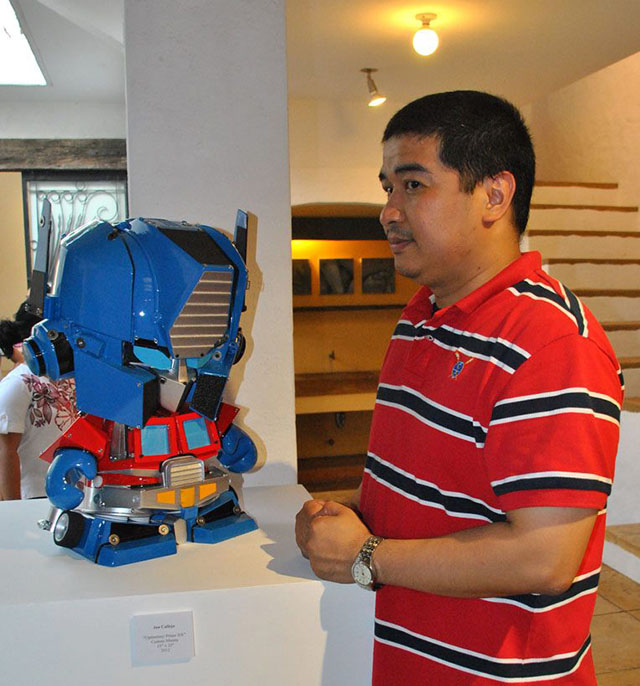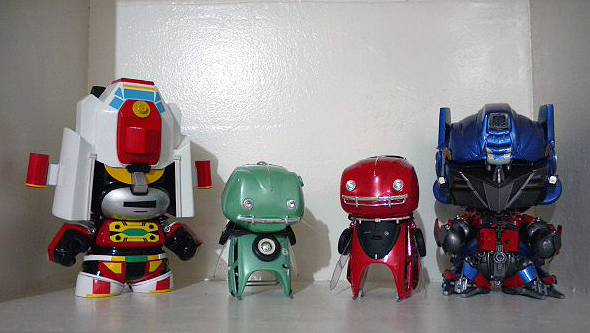Filtered By: Lifestyle
Lifestyle
Toys as art: Calleja and Ibanez on the culture of toy making
Text and photos by IME MORALES
Before the invention of Lego™ bricks and Barbie™ dolls, our parents and grandparents have all played with homemade toys crafted from pieces of wood, strips of rubber, flattened bottle caps, strings, and paper. From these they have made toy cars, slingshots, kites, tops, tambourines, and other DIY toys.

Maj. Dick Winters, Woombie, Woombie 2.1, Mr. Sherman, and Formula GAN-R07 (all toys by Jan Calleja except the Woombies of G. Ibanez) Photos by Ime Morales
Today, even as toy stores overflow with factory-made toys and licensed pieces, there are still people who painstakingly fabricate their own toys. Some have turned custom toy making into a business. Others craft urban toys, as they are sometimes called, as a mode of self-expression, like painting or sculpture. These artists are creating a (counter) culture, populated by contemporary designs not only in limited edition toys but also in fashion, comics, film/animation, music, architecture, and fine art.
Two custom toy makers who are now slowly making waves in the designer toys arena are Jan Calleja and Gilbert Ibanez. Both creatively find ways to balance their full-time work in a big advertising agency and their toy-making passion. They work in the wee hours of the morning, putting together found objects and raw materials like styrene, putty, and paint to create literally one-of-a-kind pieces that cost, well, a simple man’s fortune.

Jan Calleja with his Optiminni Prime XX, 20-inch Mega Munny
A washer there, a ballpen spring here, a piece of Styrofoam, some loose parts from an old computer, and voila, a customized robot like you have never seen before! But don’t let the randomness of the toy parts fool you, it is a process far from being simple, and the results have garnered Calleja international renown: numerous exhibitions in Toy Art Gallery in Hollywood, California. Plus, recognition from local bodies like TAGCOM Manila (2007), Clutter’s Designer Toy Awards (Nominee for Best Toy Customizer of 2011), Custom Stikfas Contest (2008), and Rotobox Vinyl Anatomica’s Custom Celsius Contest (2010).
“Why would I buy a toy that looks exactly like that figure in the movie?” Calleja paraphrases Paul Budnitz. “We want to make something new, what people need to see now. The toy artist creates what he wants to happen,” he says.
For Ibanez, who aside from being a graphic artist and toy maker is also an MMA (Mixed Martial Arts) practitioner, toy making is all about telling stories. An example: “I made Woombie (wooden zombie) from wood out of a neighbor’s fallen tree,” Ibanez relates. “I thought of somehow resurrecting the tree that died.”

Custom toy maker cum graphic artist Gilbert Ibanez
“The function of these types of toys is unlike that of typical action figures,” he continues. “You start with the raw, white base as your canvas and then you work on it based on the message you want to convey.”
Calleja taught Ibanez most of what the latter knows about toy making, in terms of technique and process, which he himself learned from UP’s Industrial Design gurus: Dean Doi Rosete and Professors Mel Sylvestre and Tats Enrique. An Advertising graduate from UP Diliman, Calleja applies what he learned in college in his work now of transforming a toy into a creative expression of the artist’s self: sentiments, values, feelings, and story all glued together into one wicked creature.

From left: Dai-Munny, Oval Beetle, Red Beetle, and Opti-Munny Prime (all toys by Jan Calleja)
Ibanez is known for his monster toys, Calleja for his amazing mecha (Japanese meka) creations that look so fine and polished he’s bound to give commercial toy makers a run for their money. He’s upped the bar in custom toy making, says Ibanez of his friend. To which Calleja replies, “I want my toys to look better than those in the stores. It’s a sculpture, an artwork. It needs to be very clean.”
He dreams of taking things further by going into the design of other functional objects, like houses, for instance. “It is an art form that can still be developed,” he ends. “I just want to keep on moving forward.” —KG, GMA News
More Videos
Most Popular



